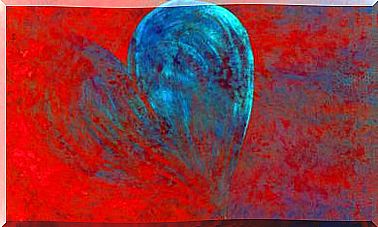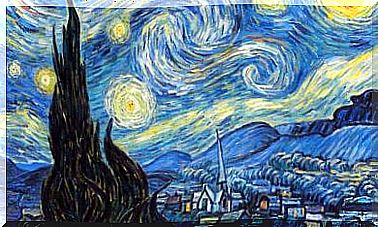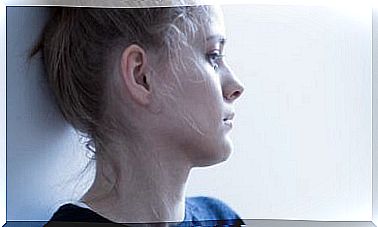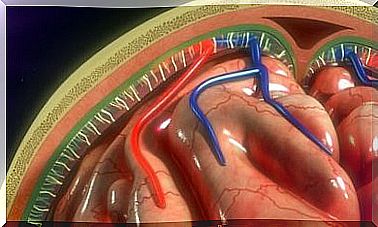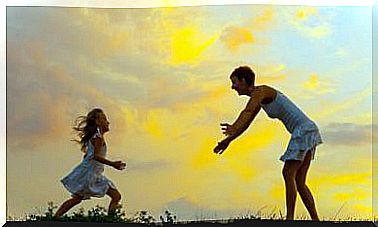Basal Ganglia: Anatomy, Physiology And Functions
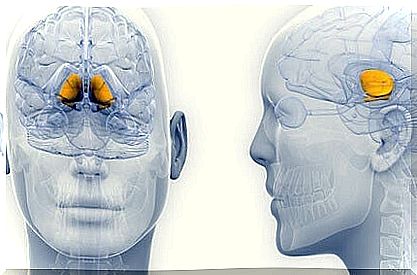
Use your hands to catch a ball, move your feet to climb a ladder, drive, paint, play an instrument … The basal ganglia are a group of neurons specialized in processing information about movement. They help us fine-tune and adjust each of the simplest actions that we carry out throughout the day.
We are facing a set of subcortical nuclei of the brain that play a very important role. It should be noted, as a curiosity, that they are not part of the motor system itself. They are actually a vast set of interconnected structures with different areas. Its purpose, therefore, is to plan actions, those that have a very specific objective and that often start from previous learning.
Neurologists describe the basal ganglia as those neuronal groups that refine the functions of the cerebral cortex. They ensure, so to speak, the correct execution of any motor plan between the brain and the muscles. In this way, any alteration in these structures inevitably leads us to experience alterations in movement. As happens, for example, in diseases such as Parkinson’s.
Let’s see more data below.
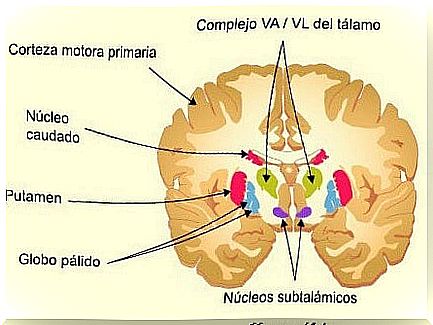
Basal ganglia, what are they?
The basal ganglia, as we already know, modulate and control motor activity. However, they perform many other functions. Thus, studies such as the one carried out by the Center for Applied Medical Research at the University of Navarra (Spain), indicate the following.
- The basal ganglia mediate everything that has to do with motor learning (doing sports, activities such as driving, writing, doing crafts …). However, they also have a very significant connection with motivation and emotion.
- On the other hand, when we speak of basal ganglia we must know that they are made up of a series of interconnected subcortical nuclei. They are located around the limbic system and the third ventricle (at the level of the temporal lobe)
- The main neurotransmitters that work in these structures are dopamine and GABA.
- In addition, new data on the anatomy and functional chemistry of the basal ganglia have been discovered that help us to better understand their relevance to our behavior and activity. Also to treat various diseases.
Composition of the basal ganglia
The basal ganglia are classified into entry nuclei (those that receive information from other brain structures), exit nuclei (those that send information to the thalamus) and intrinsic nuclei (those that act as intermediate areas between the previous ones). So let’s see how they are organized.
Striated body
The striatum is the largest subcortical brain structure in the mammalian brain. It is an area that acts as an intrinsic nucleus, that is, it receives information and, in turn, sends it to other areas.
Caudate nucleus
The caudate nucleus is related to the modulation of movement and also to various emotional processes. It is connected to the frontal lobe and regulates aspects such as motivation, memory, the feeling of threat …
Lenticular core
The lenticular nucleus is a structure that is located just below the caudate nucleus. It is a fairly large area (about 5 cm) that facilitates motor skills, regulates our posture as well as the learning processes and even our motivation.
The nucleus putamen
In recent years, the relationship of the putamen nucleus with the feelings of love and hate has been investigated. Likewise, and within the basal ganglia, it performs a basic function in automated movement tasks. It is also located next to the caudate nucleus.
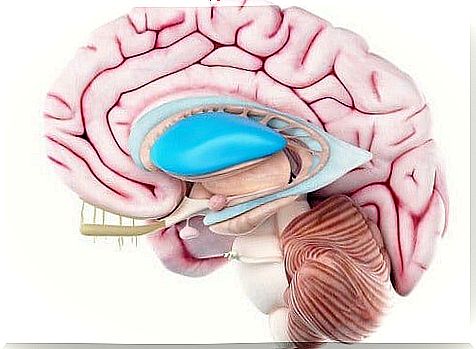
The pale globe
The globe pallidus regulates the information that is established between the putamen nuclei and the caudate towards the thalamus. Likewise, it has a connection with the limbic system, acting as a reinforcer of behaviors, especially those derived from drug use.
Black substance
The substantia nigra is integrated into the midbrain and is also a key element of the basal ganglia. Its neurons, due to a neuromelanin pigment, give it that dark coloration that tends to increase over the years. It is related to learning, movement and orientation.
In what processes do the basal ganglia mediate?
As we have seen, the basal ganglia are made up of various subcortical neuronal structures. Information is continuously sent and received between them, thus participating in processes that go beyond movement.
In fact, studies such as those carried out by doctors Ahmed A. Moustafa and Izhar Bar-Gad, from Bar-Ilan University, Ramat Gan (Israel) indicate that they are key in the processes of memory and motivation, of So any alteration is linked to conditions such as Parkinson’s disease, Attention Deficit Hyperactivity Disorder (ADHD), Tourette’s syndrome, etc.
In this way, studying precisely disorders such as those indicated, it has been possible to see over the decades in which processes the basal ganglia mediate. They are as follows.
- Regulation and control of movement.
- Learnings related to procedures that we end up automating (for example driving).
- Activities and movements related to planning.
- Motivational and emotional processes.
Diseases and disorders related to the basal ganglia
Many of the changes observed in the basal ganglia tend to have serious implications. In fact, many of these diseases that are etiologically related to these structures are degenerative in nature. They are as follows.
- Parkinson’s disease.
- Huntington’s disease.
- PAP syndrome (clinical condition related to a serious lack of motivation).
- Tourette syndrome.
In conclusion. It should be noted that conditions such as obsessive compulsive disorder and attention deficit disorder – with or without hyperactivity (ADHD) – are also associated with small alterations in the basal ganglia. However, in these cases psychological treatments can be very effective.
